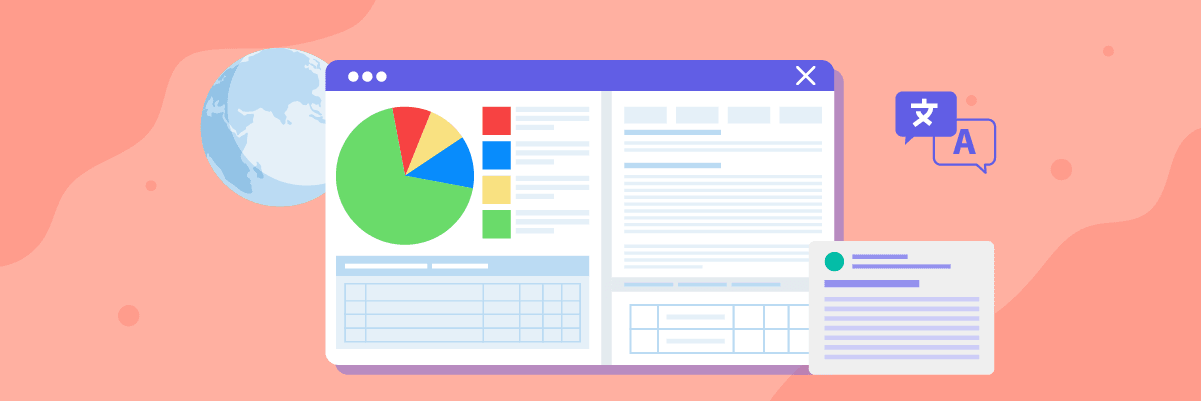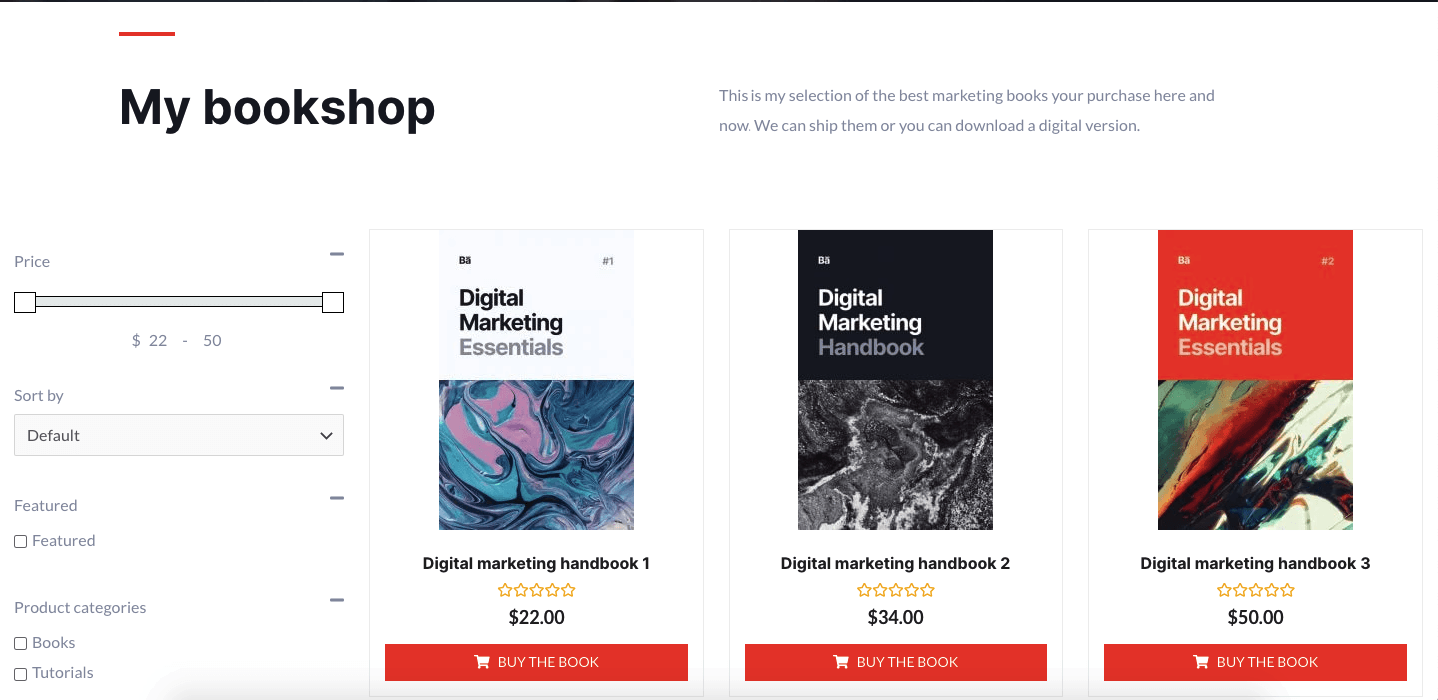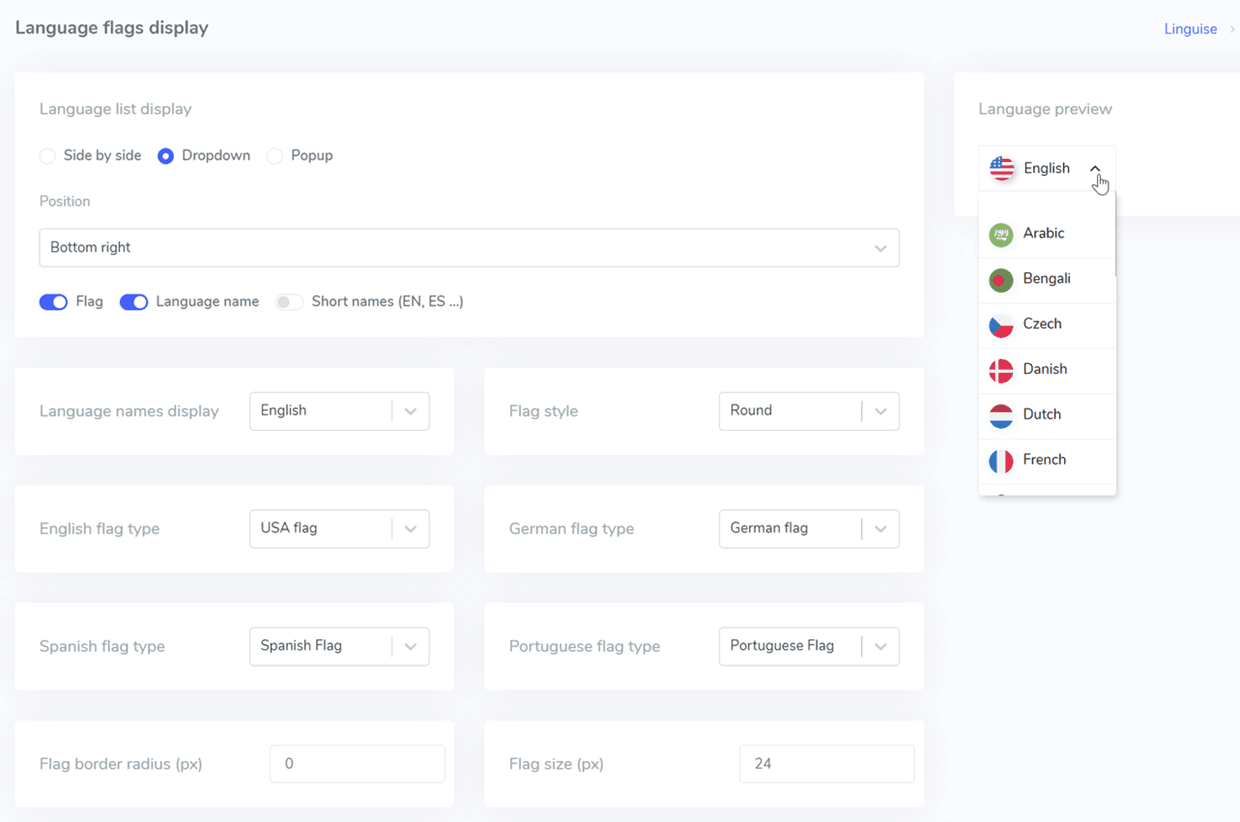One of the ways to reach international potential markets is to present website content in their language. As we know, not all countries use English as the main language. Nowadays attracting a global audience to your e-commerce store without a face or physical presence is hard and selling products to a global audience is even more difficult.
So, we need simple communication in their language using e-commerce localization. This article will tell you about what e-commerce localization is in detail. Let’s take a look!
What is ecommerce localization?
Adapting an ecommerce website for a local market is known as eCommerce localization. This process involves making the site culturally and linguistically appropriate for the target audience in a specific region or country.
Localization is an extensive and multifaceted process. It encompasses translating website content and SEO metadata, ensuring adherence to cultural and regional contexts, modifying graphics, layouts, designs, and colors, converting to local currencies and units of measurement, formatting dates, addresses, and phone numbers properly, and addressing relevant local regulations and legal requirements, among other tasks.
Let’s dig deep into each component. Let’s take a closer look at each of these key components of the ecommerce localization process.
1. Translation of website content

Translation is a core component of website localization. Translated content is required for posts, pages, image captions, buttons, menus, footers, pop ups, sidebars, product description, and other website elements.
What is the Difference Between Translation and Localization?
It’s important to note that translation and localization are different processes, even though they are often used interchangeably. Translation is just one part of the broader localization effort.
Localizing an eCommerce website involves aligning the entire user experience with the target audience’s cultural expectations at every level. Localization is a comprehensive process that requires developing a localized marketing strategy and making extensive adaptations across the website. For more information, review this guide on localization vs. translation.
2. Translation of MetaData

One of the crucial roles in optimizing an eCommerce site is SEO metadata that includes titles, meta descriptions, meta tags, and sitemap plays.
For example, technology companies selling smartphones globally need to ensure that their product titles and meta descriptions are accurately translated and optimized for each target market. This may involve using local keywords and phrases that potential customers are likely to search for. By localizing metadata will help us to get rank in local search engines and draw local traffic from our target region.
3. Adapting content for regional and cultural

When you’re localizing your website for different regions, it’s important to make sure the content not only translates accurately but also resonates with the local culture and customs.
For example, if you’re targeting an audience in the United States, you’ll want to discuss popular sports like football, baseball, and basketball. But if you’re localizing for a Norwegian audience, you’d need to focus on sports like skiing, biathlon, and ice hockey instead.
Additionally, you may need to use specific language dialects depending on the region in Norway. For Western Norway, you’d use the Nynorsk dialect, while for the rest of the country, you’d use the Bokmål dialect.
The key is to thoroughly understand the cultural and regional nuances of your target audience, and adapt your content accordingly. This will help ensure your localized website feels authentic and resonates with the people you’re trying to reach.
4. Translation of media

Localizing images and media content is essential for creating a culturally relevant and visually appealing eCommerce experience. This process involves more than just translating text overlays on images; it requires a deep understanding of cultural norms, preferences, and sensitivities in the target market.
For example, a food delivery app expanding from the United States to India would need to consider different dietary preferences and cultural norms when selecting images for their platform. They might need to prominently feature vegetarian options, use images of local cuisines, and ensure that any depictions of food preparation or consumption align with local customs. By localizing images and media, businesses can create a more relatable and engaging shopping experience for their international customers.

But if you look at marketplace on another country like Japan, you will find like this:

5. Modification of site layout, design, and color

Each language has its own peculiarities. Some start on the right hand side, others on the left. Some languages also require different spacing, which can be larger or smaller because they don’t use the common letters of the alphabet. This will affect the page layout on the website.
Meanwhile, colours, shapes, icons, sizes of objects and even animals have different meanings in different cultures. In wedding ceremonies, white is revered in Western countries while red is the traditional wedding colour in Eastern countries. Bears can symbolise strength in some cultures and be associated with fear in others.

6. Localized Currencies and Units of Measure

Localization not only about translating words. It involves adapting to local customs, including how money and distances are displayed.
For example, the way we write monetary amounts varies across the globe. In the United States, we use the dollar sign ($) before the number, like “$10”. However, in Europe, the symbol comes after the number, resulting in “10€”.
Similarly, units of measurement differ. While miles are common in the US, many other countries, including those in Europe, use kilometers to measure distance. Understanding these cultural nuances is essential for creating a truly localized experience.
7. Dates, addresses, and phone numbers

The format of dates can vary depending on the region, which can lead to confusion. For example, the date 07/08/2000 is typically interpreted as August 7th, 2000 in most parts of the world, but in the United States, it would be read as July 8th, 2000.
The structure of addresses also differs between countries. In the United States, addresses commonly include the street address, city, state abbreviation, and ZIP code. In contrast, addresses in the United Kingdom have a different format, with elements like postal codes, town or city, and county.
When dealing with phone numbers, it’s important to consider the local formatting, country codes, and dialing patterns to ensure the number is interpreted correctly.
8. Compliance with privacy laws and local regulations

Failure to comply with local regulations and privacy laws can lead to legal issues, financial penalties, and damaged brand reputation. For example, the European Union’s General Data Protection Regulation (GDPR) imposes strict rules on the collection, processing, and storage of personal data. When localizing your eCommerce site for EU countries, you must ensure that your data handling practices are aligned with GDPR requirements.
Localization is a huge process and these are some of the common components. Even so, it brings many benefits to some businesses. Localisation means unique and targeted segments. If you can deliver that to your customers, it can provide real conversion potential.
The benefits of localization in e-commerce

There are a number of benefits you can get from e-commerce localization. By implementing them you will get a clear picture of how localization can really help you to grow your website in 2024. Here’s the benefit you can get:
1. Having a seamless global experience
When you integrate your localization processes directly with your e-commerce development, you achieve “continuous localization.” This allows you to quickly translate and update content as soon as it’s created, ensuring a cohesive experience across all your markets. Automated workflows and centralized data management are crucial here.
2. Efficient global merchandising
Localization empowers your merchandising teams to easily adjust product content, landing pages, and other assets for each local market. A centralized platform gives them the ability to localize, edit, and publish this information rapidly. This agility is key for optimizing your global product offerings.
3. Consistent brand identity
Maintaining a unified brand voice globally is challenging, but critical for building trust and loyalty. Ecommerce localization solutions that keep all content, messaging, and assets in one place make it easier to ensure consistency. Automation reduces human error while giving all stakeholders access to the same up-to-date information.
4. Satisfied customers worldwide
Providing excellent customer service in the local language is a major differentiator. Ecommerce localization tools can integrate with your support systems to deliver multilingual assistance. This personalized experience boosts customer satisfaction and repeat business.
5. Global expansion opportunities
Reaching new international markets becomes much more achievable with a robust localization strategy. Translating your content, optimizing for local SEO, and offering a tailored shopping experience allows you to effectively scale your ecommerce operations worldwide. Even small businesses can compete globally with the right approach.
How to build ecommerce localization
The first step to localization is translate your e-commerce website into new languages. There are several ways to translate your e-commerce site, either manually or automatically, depending on your needs and capabilities.
However, if you want your ecommerce site to be easy to translate and quickly reach a global audience, the best option is to use an AI-powered automatic website translation software. We recommend Linguise as your best choice.
One of our clients, Jaderoller.com, a beauty e-commerce pioneer in the Western market that brings beauty tools and skincare secrets from Asia to the world, is already using Linguise.

After localization their site, they found it much easier to expand into new markets at an affordable price. Linguise also offers many features that support their e-commerce operations, such as multilingual SEO and dynamic translation feature. These features help ensure your site’s visibility on Google search pages, making it easily discoverable by users.
How to use Linguise for optimize ecommerce localization
Linguise can be used by a variety of web commerce and businesses who want to translate their sites into different languages. If you are new to trying the feature, you can take advantage of the free trial version that we offer for 1 month. You can use Linguise without a credit card. To activate the free trial, follow the steps below.
Step 1: Registration & get the API key
The first step is to begin, you need to sign up for a Linguise account and obtain an API key. If you have registered you will get access to the Linguise dashboard. Just go to Settings menu > then find the API key and copy it to the clipboard.

Step 2: Add language to your list
The second step is to add the language you want to the list of translation options. In the free trial version, you can add as many languages as you want.

Step 3: Install & setup the plugin Linguise
The third step is to open your site’s dashboard and install the Linguise plugin. Don’t worry, Linguise is compatible with various CMS, be it WordPress, Joomla or other CMS.
Then select the Add plugin menu > search Linguise > Install and activate. If the plugin has been activated successfully, then enter the Linguise plugin settings.
In the column below you can paste the API key that was previously obtained.

You then have the option to set the flag as the logo for each language. You have the flexibility to place the flag wherever you want.
If the display language setting is complete, then something like this will appear on your website.

Linguise pricelist for automatic website translation
Don’t worry about the price list, because Linguise offers a free one-month trial for e-commerce localization on your website. With the free version of Linguise, you can translate up to 600,000 words per month. Plus, no credit card is required to sign up.
When the free trial is over, you can upgrade to a Linguise subscription from $15/month.
START
- INCLUDED IN 1st MONTH FREE TRIAL
- 200 000 translated words
- Unlimited translated page views
- Unlimited languages
- 1 website per plan with one month free
PRO
- INCLUDED IN 1st MONTH FREE TRIAL
- 600 000 translated words
- Unlimited translated page views
- Unlimited languages
- 1 website per plan with one month free
LARGE
- ACCESSIBLE WITH SUBSCRIPTION
- UNLIMITED translated words
- Unlimited translated page views
- Unlimited languages
- 1 website per plan
Conclusion
E-commerce localization is important for global marketing strategists. There are many benefits such as having a seamless global experience, efficient global merchandising, consistent brand identity and many more. Linguise as an automated translation tool will help you achieve your goals with ease. We are also backed by dynamic translation which can enhance the seamless experience once we translate the pages. So what are you waiting for? Register for Linguise now and get your 1 month free trial with no credit card needed.





